Nissan Micra
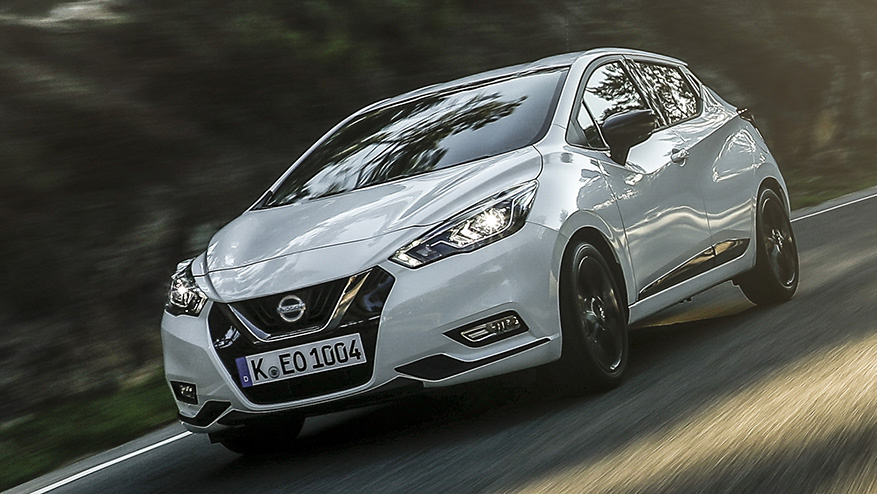
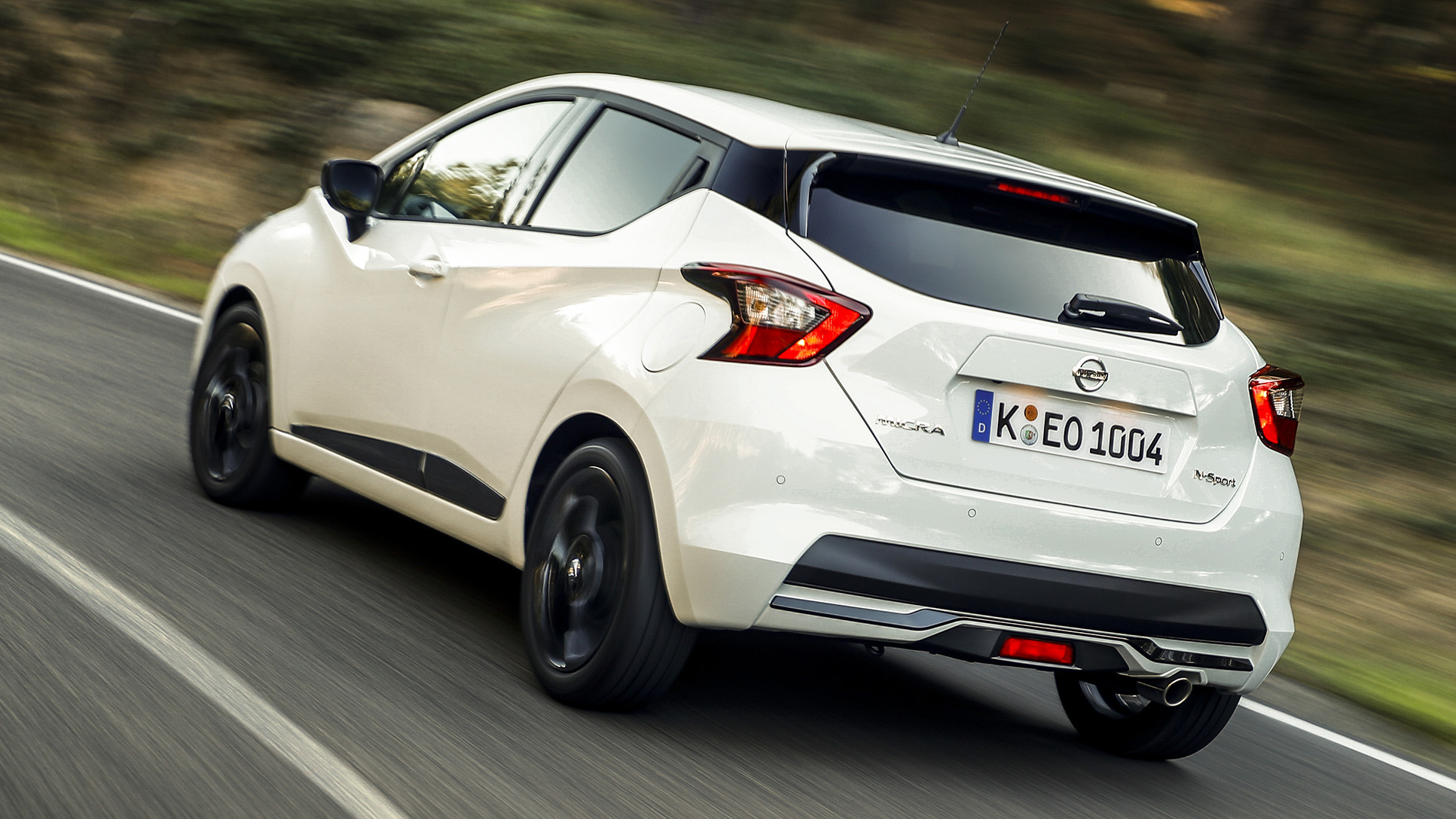
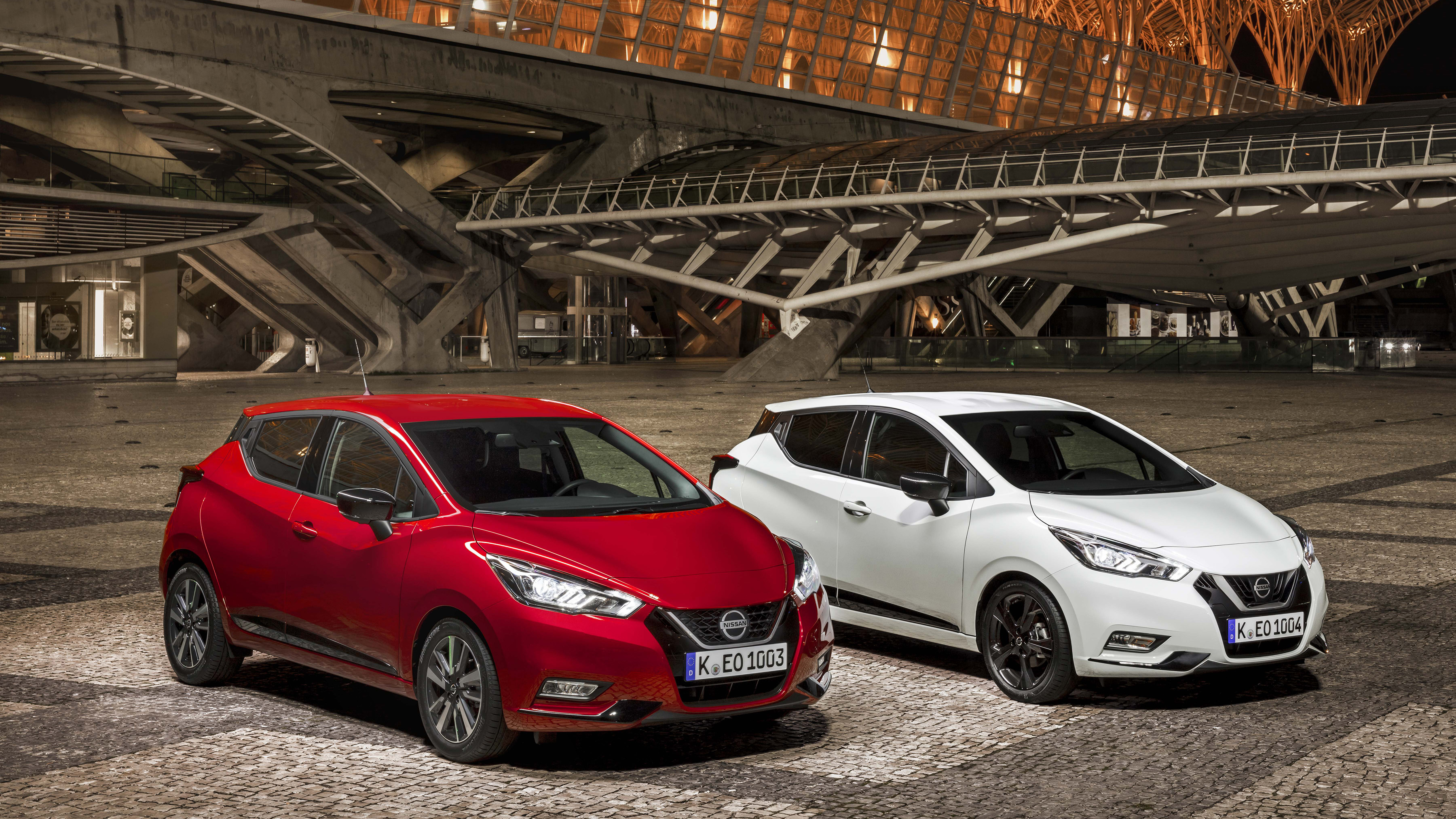


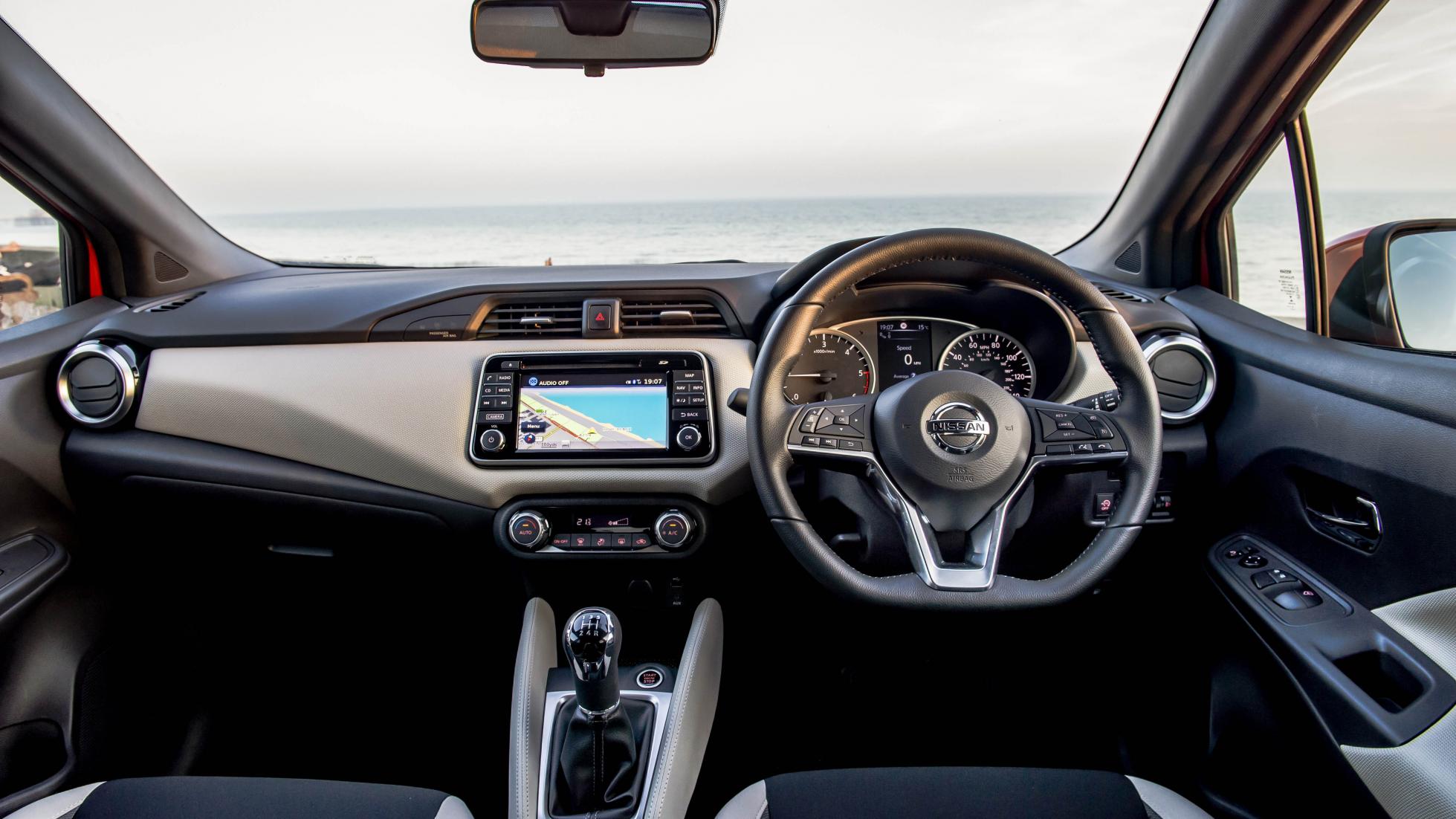
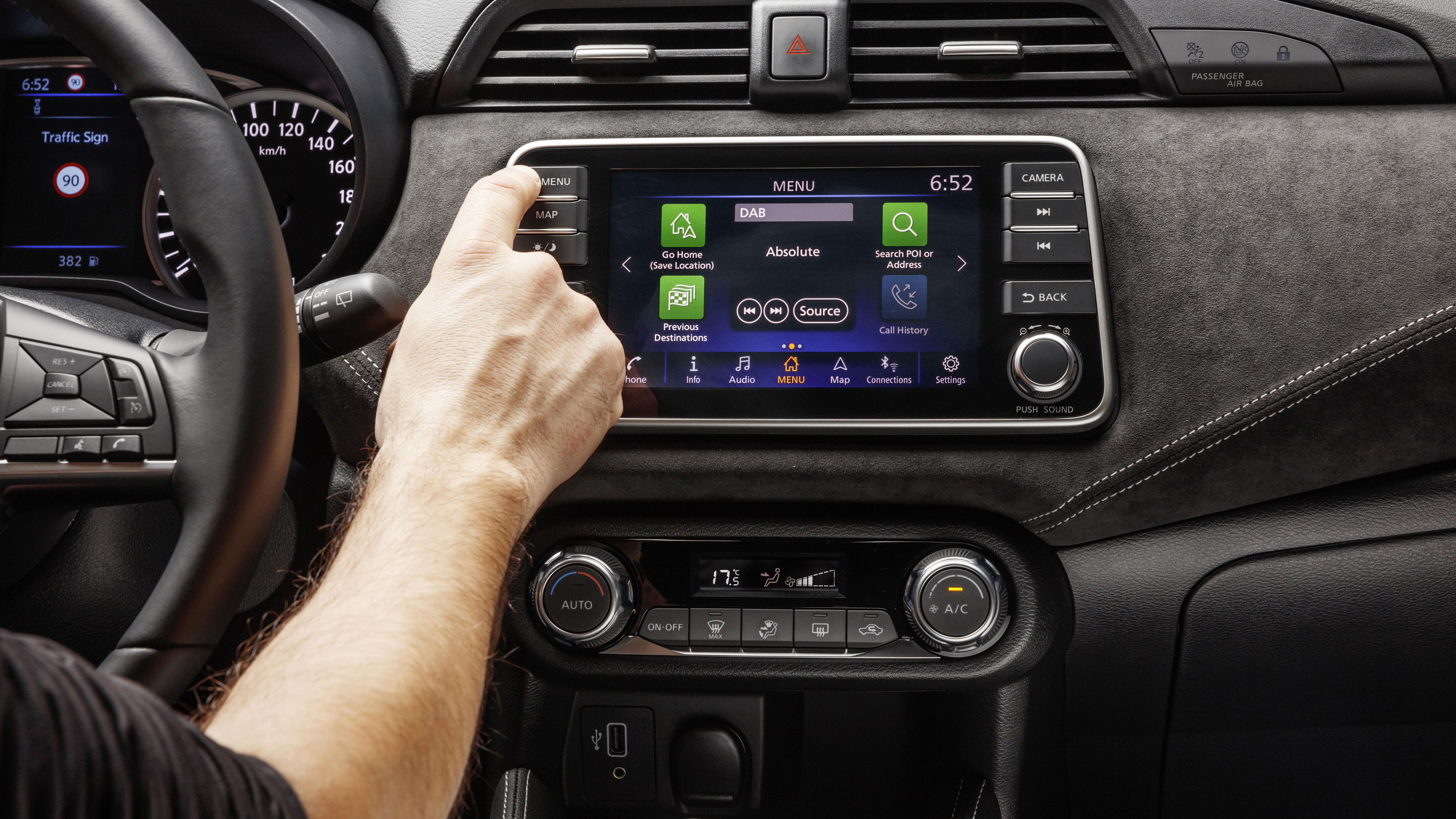
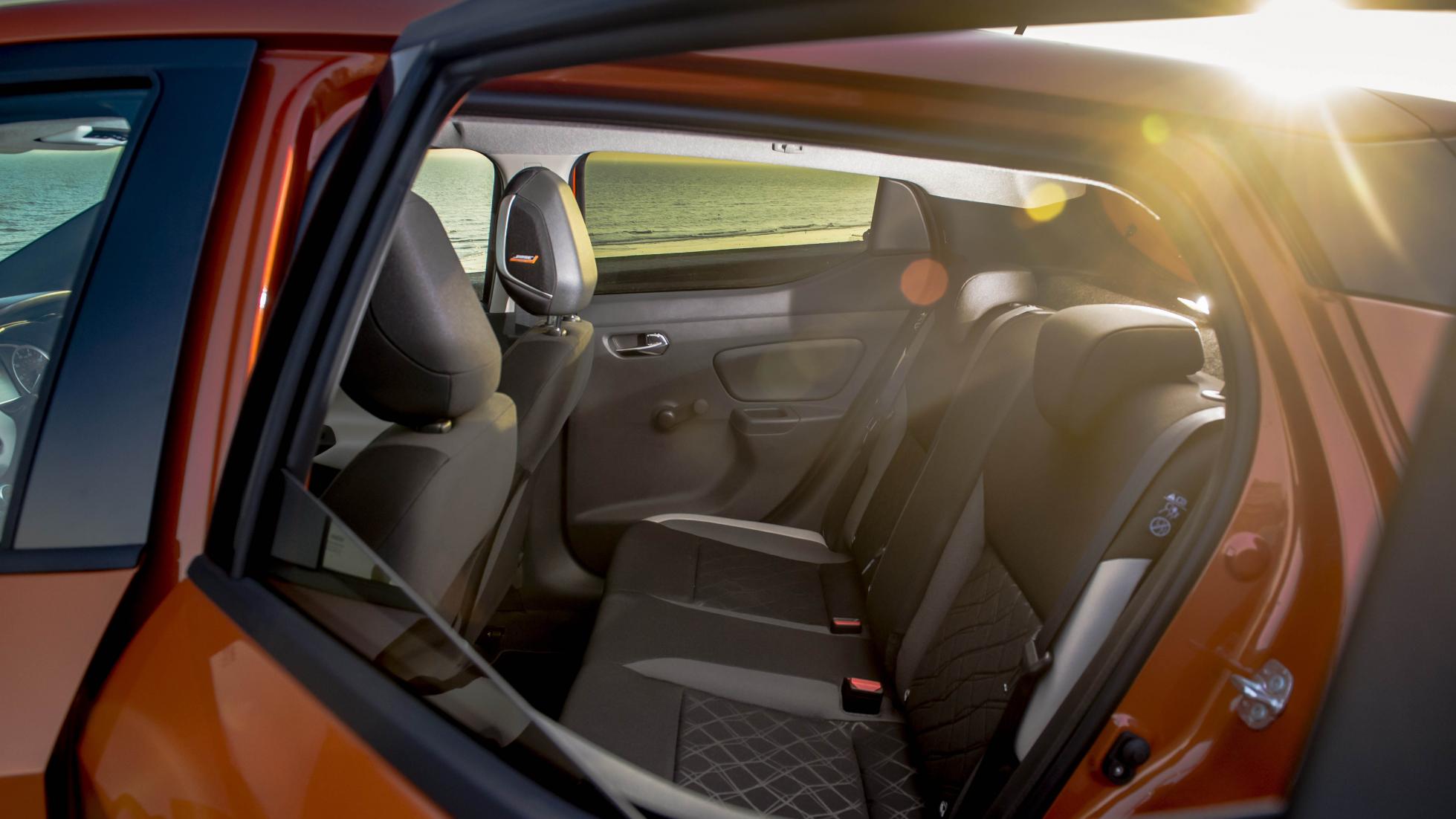
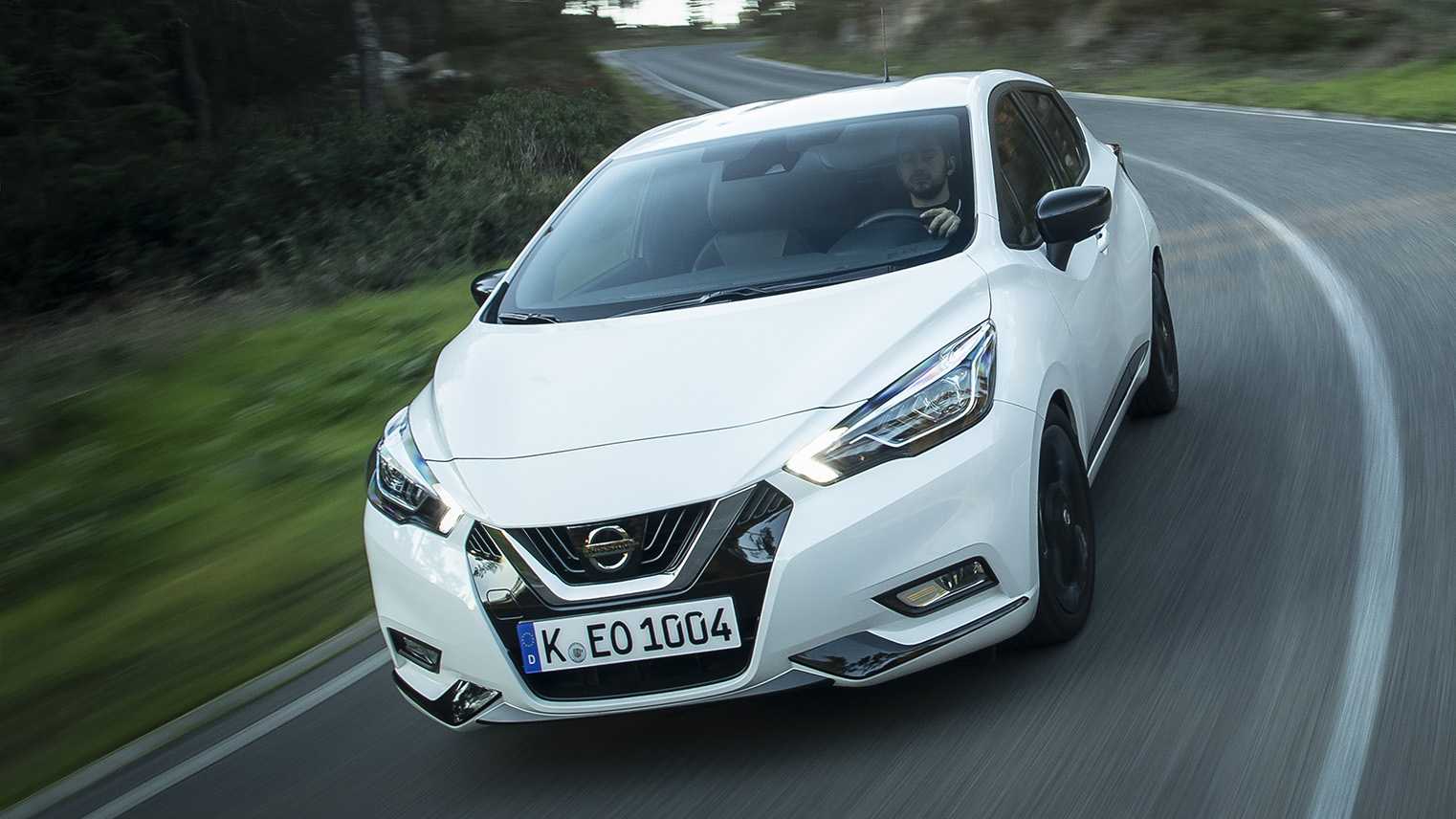
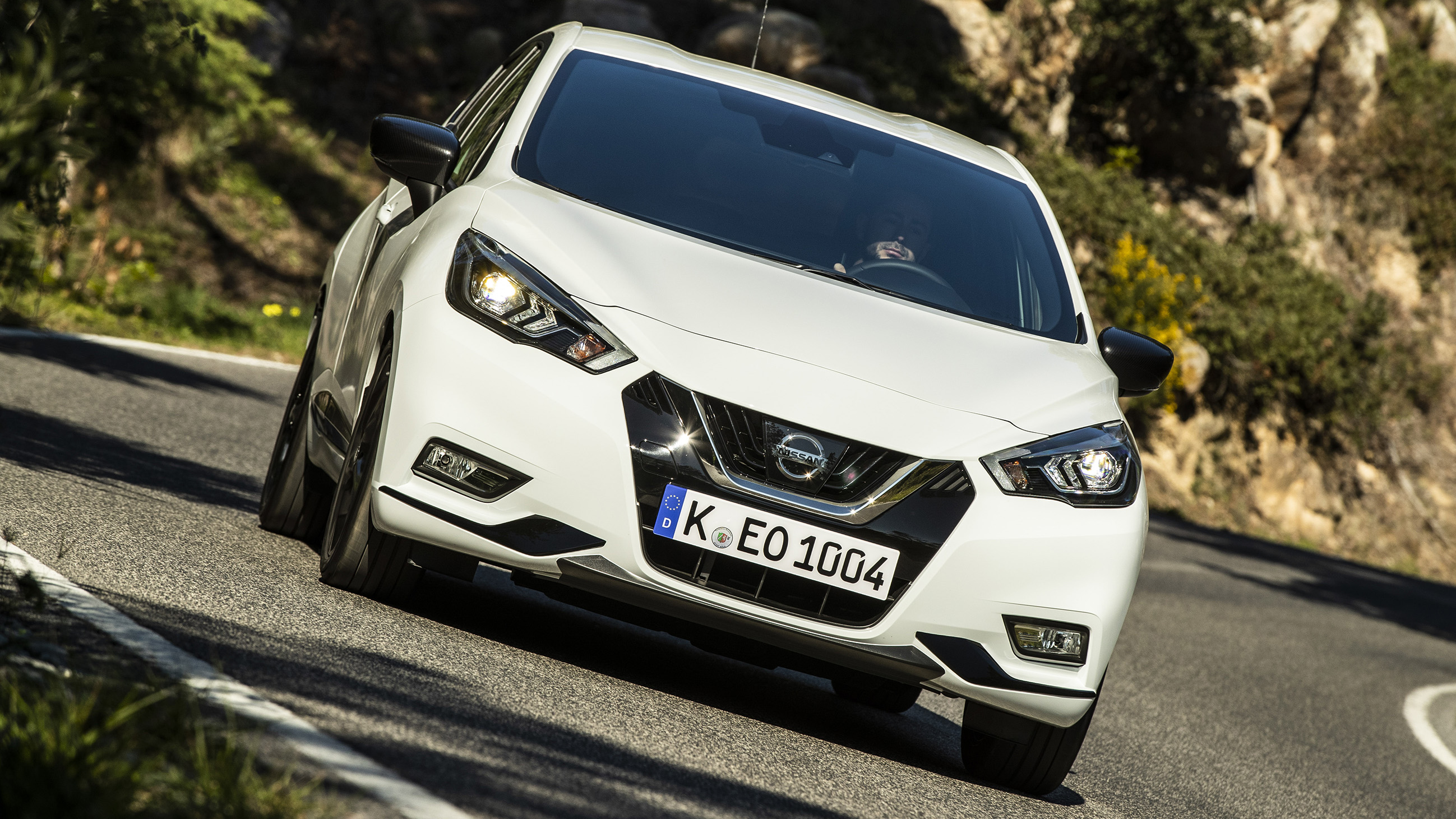
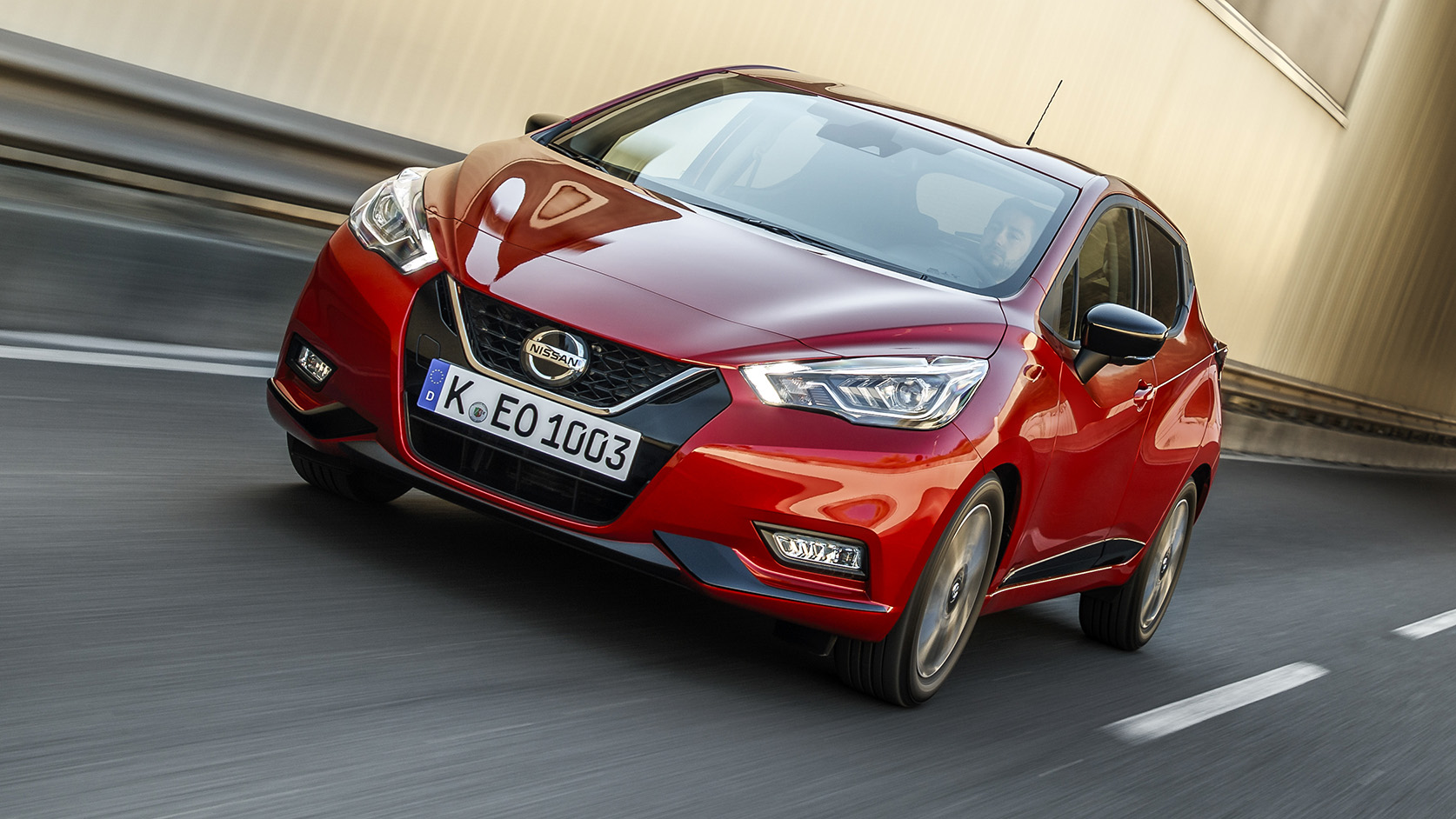

Good stuff
Angry space-hamster looks, chuckable handling, simple cabin
Bad stuff
Improved engines still anaemic, cramped in the back
Overview
What is it?
Another Ford Fiesta chasing small car. What’s Nissan done to stand out? Well, just look at it. After a couple of cutesey bubble-car Micras, it’s all very angular and sporty looking now. And underneath, Nissan’s worked on making it handle with a similarly sporty verve. And you know what? It’s actually worked. This possesses one of the more chuckable supermini chassis out there.
The previous-gen Micra was a ‘world car’ built to satisfy the needs and demands of not just Europe, but Asia, South America and so on, making it was massively compromised. This one’s specifically designed for Europe, so it’s 174mm longer, 78mm wider and 55mm lower, more stylish and better equipped, with tech borrowed from the hugely successful Qashqai.
This approach was a gamble for Nissan, but it’s paid off. In 2017, Micra sales leapt by 44 per cent versus the previous year. A whopping 65 per cent of people who buy a new Micra aren’t replacing a Nissan, but another brand’s car. That’s called ‘conquesting’, and it’s the sort of stat that makes car company bean-counters go weak at the knees and grin a lot.
For 2019, Nissan’s aiming to keep the momentum in the Micra by upgrading one of its biggest weak spots: the engine range. There’s a new 1.0-litre turbocharged petrol three-cylinder engine with 99bhp on offer, or another 1.0-litre unit with 114bhp, developed apart from the lesser powered version (for reasons that don’t seem clear or logical) and instead sharing nous with the 1.3-litre engine Renault-Nissan has recently cooked up with Daimler.
Plus, there’s finally a six-speed manual gearbox instead of a motorway-unfriendly five-speeder. You can also have a CVT auto for the lower powered version if you really, really must.
Oh, and if you’d like something slower than walking, please be aware that the 69bhp non-turbo Micra and 90bhp 1.5-litre diesel live on, for no reason we can think of. Seriously, the 1.0-litre is where it’s at. Preferably with the higher output.
To that end, there’s a new Micra N-Sport. It’s been pitched as a lukewarm hatch, not a proper hot performance version, but bizarrely it’s a trim-line available with all the new engines, not limited to the quickest one. Look out for big wheels, faux carbon door mirrors and Alcantara trim covering the dashboard, like you get in a Ferrari 488 Pista.
All Micras are front-wheel drive, five-door, five-seaters – there’s no jacked-up crossover version (that’s what the Juke is for) nor a proper Nismo performance version. It’s very much a traditional supermini. The question, then, is whether or not it does anything remarkably enough to stand out in such a crowded market…
Nissan Micra












Driving
What is it like to drive?
Lots of small cars claim to be fun to drive, but not many of them are, really. The Micra, perhaps against the odds, is one of the good guys. The light, fast steering is obeyed by a keen front end that’s happy to be chucked into corners without catching the back end half asleep. It feels agile, light on its feet, and accurate. The ride is a well-judged compromise of halting roll and compliance, though on seriously rough back roads you’ll notice a clanging resonance as the suspension starts to reach the limits of its travel.
Or… you might not. Because to get up to the speeds where the suspension gets out of sorts, you’re going to need serious commitment in a Micra. The old engines suffered lethargic power delivery and poor driveability, and the new 114bhp triple is only just on the right side of adequate.
A warm hatchback in raw performance, it’s really not. Though the new engine has inherited anti-friction internals from the Nissan GT-R and electric turbo actuators that supposedly cut turbo lag, this isn’t as keen as the rival engines you’ll find in Ford, Seat or Kia competitors.
On the motorway, with the car settled into a cruise, there’s a fairly high amount of road noise compared to say, a Polo, but it’s not terrible for the class, and wind noise is handsomely suppressed. The gearchange feels a little cumbersome at first, as if the lever’s too long (or borrowed from a bus or lorry), but get used to that and you notice it places your hand closer to the steering wheel. So rattling off quick changes to keep the engine on the boil is easily at hand. The seats are comfy too, if a little small for the more wide of hip.
Overall, the Micra’s near the top of its class for handing, bettered only by the likes of the Ford Fiesta and Mazda 2. However, its engines aren’t as flexible as the rivals, and in a class this competitive, that knocks its otherwise zesty on-road appeal.
The new Nissan Micra is a ten-second car
Facelifted Micra has arrived in the UK. It will do some things in ten seconds
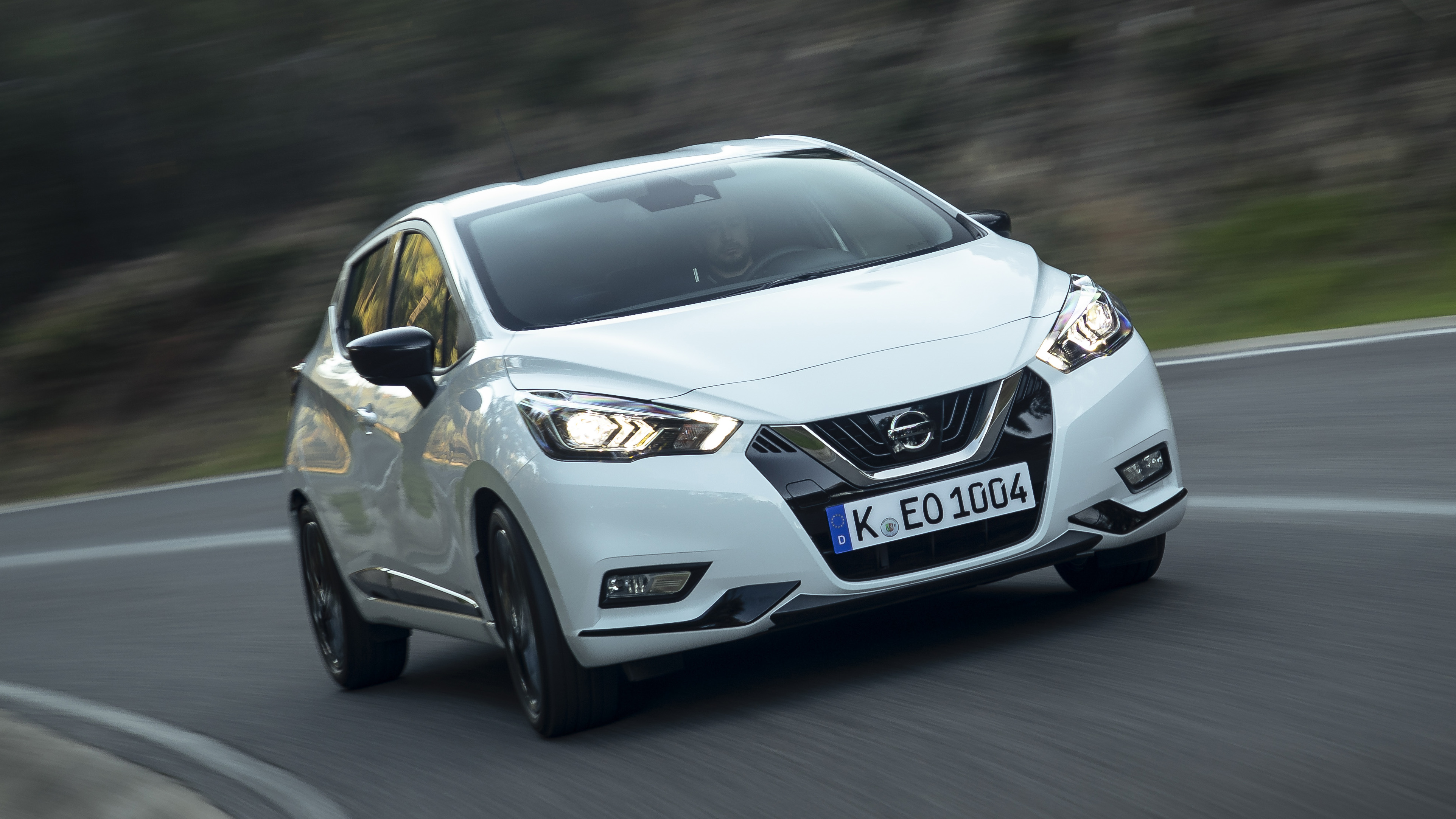
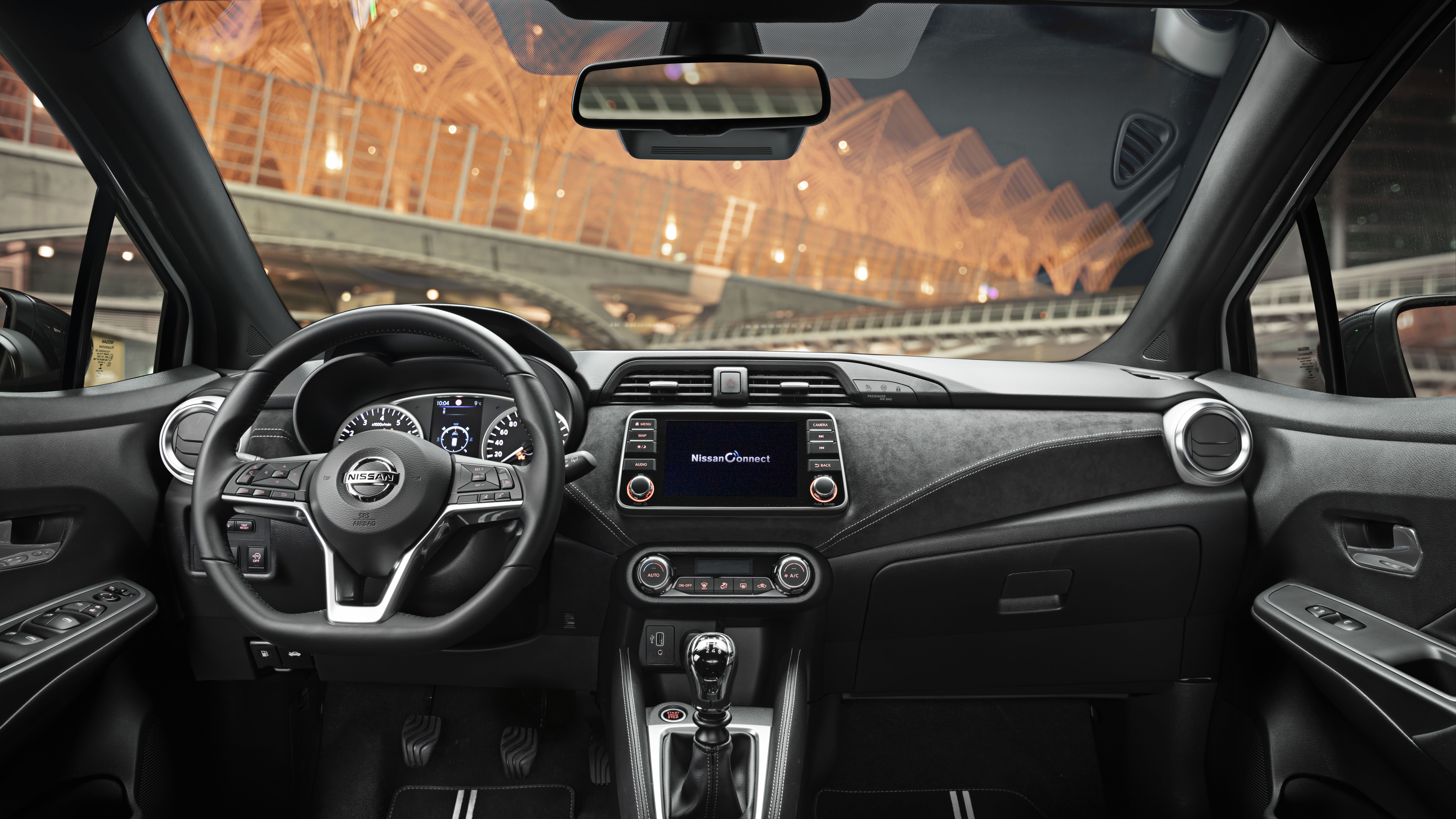
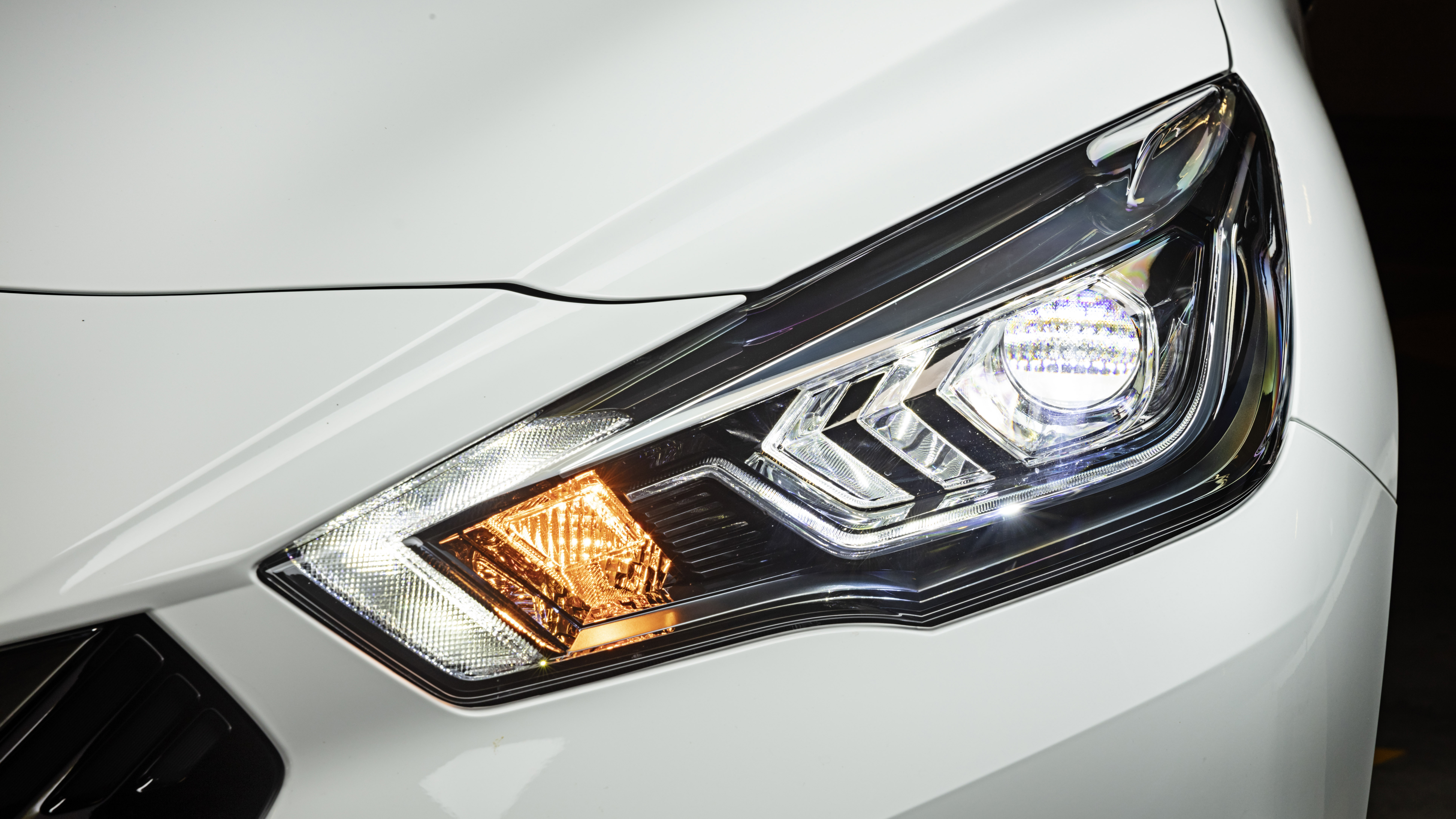


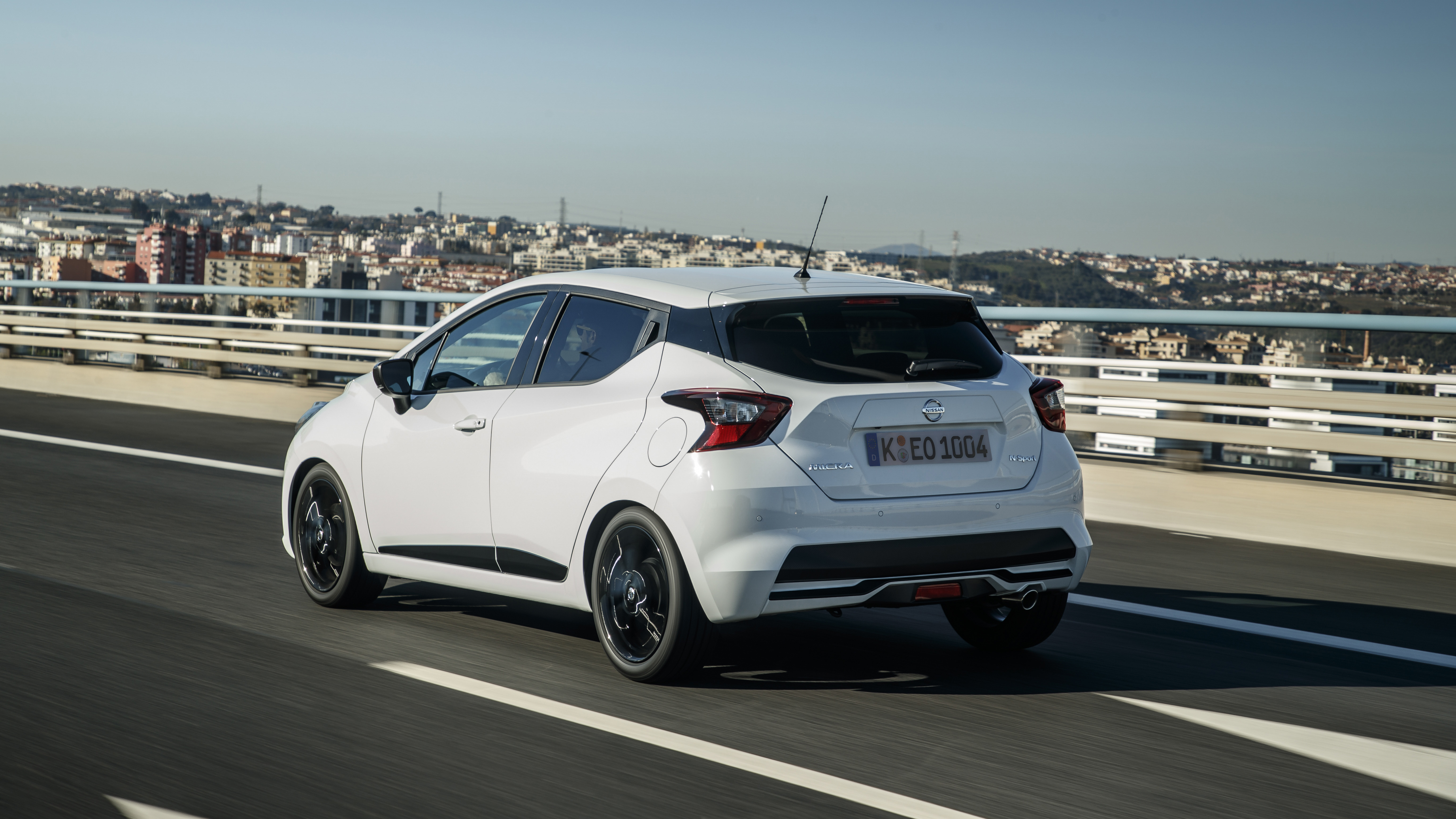
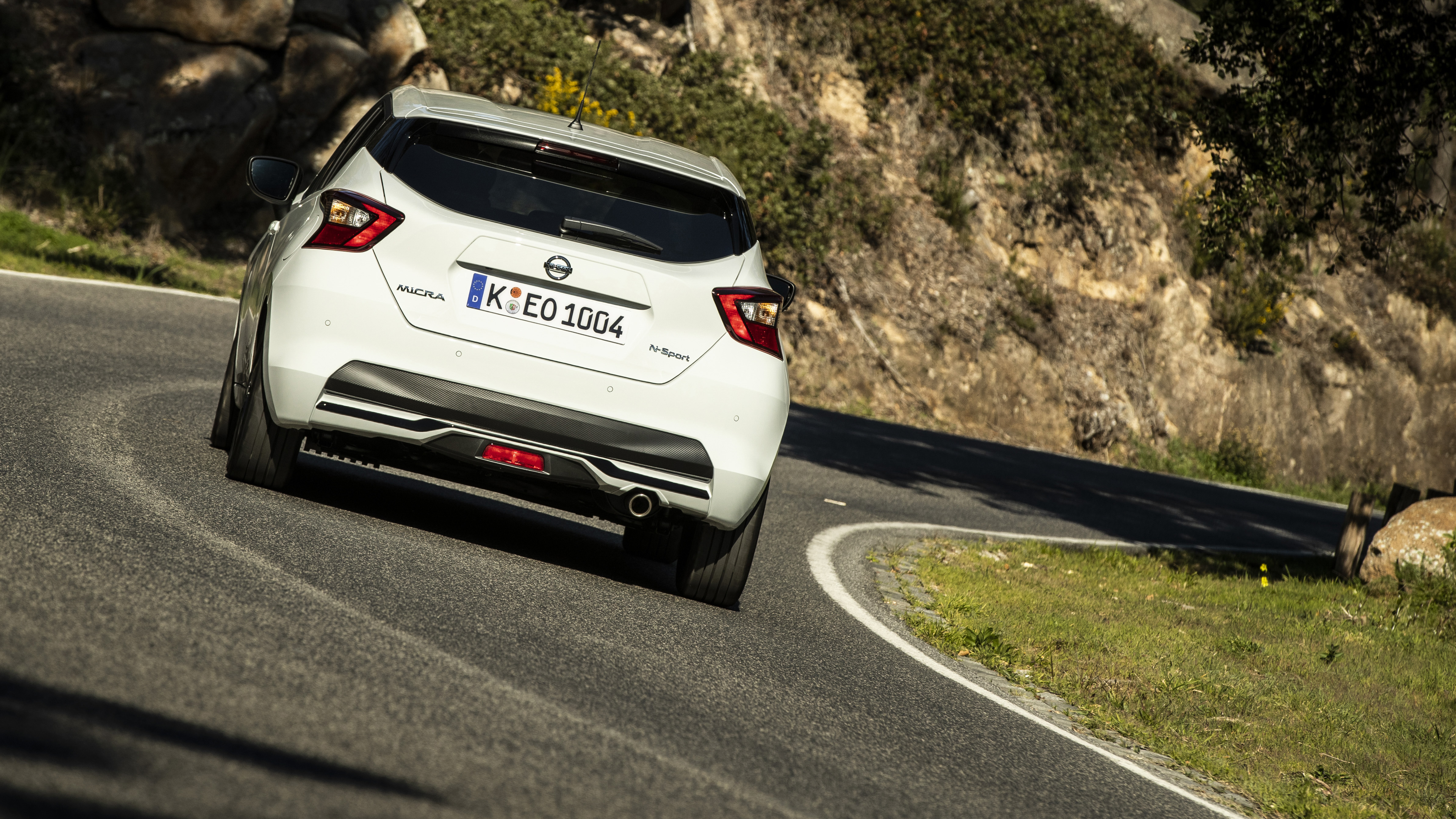
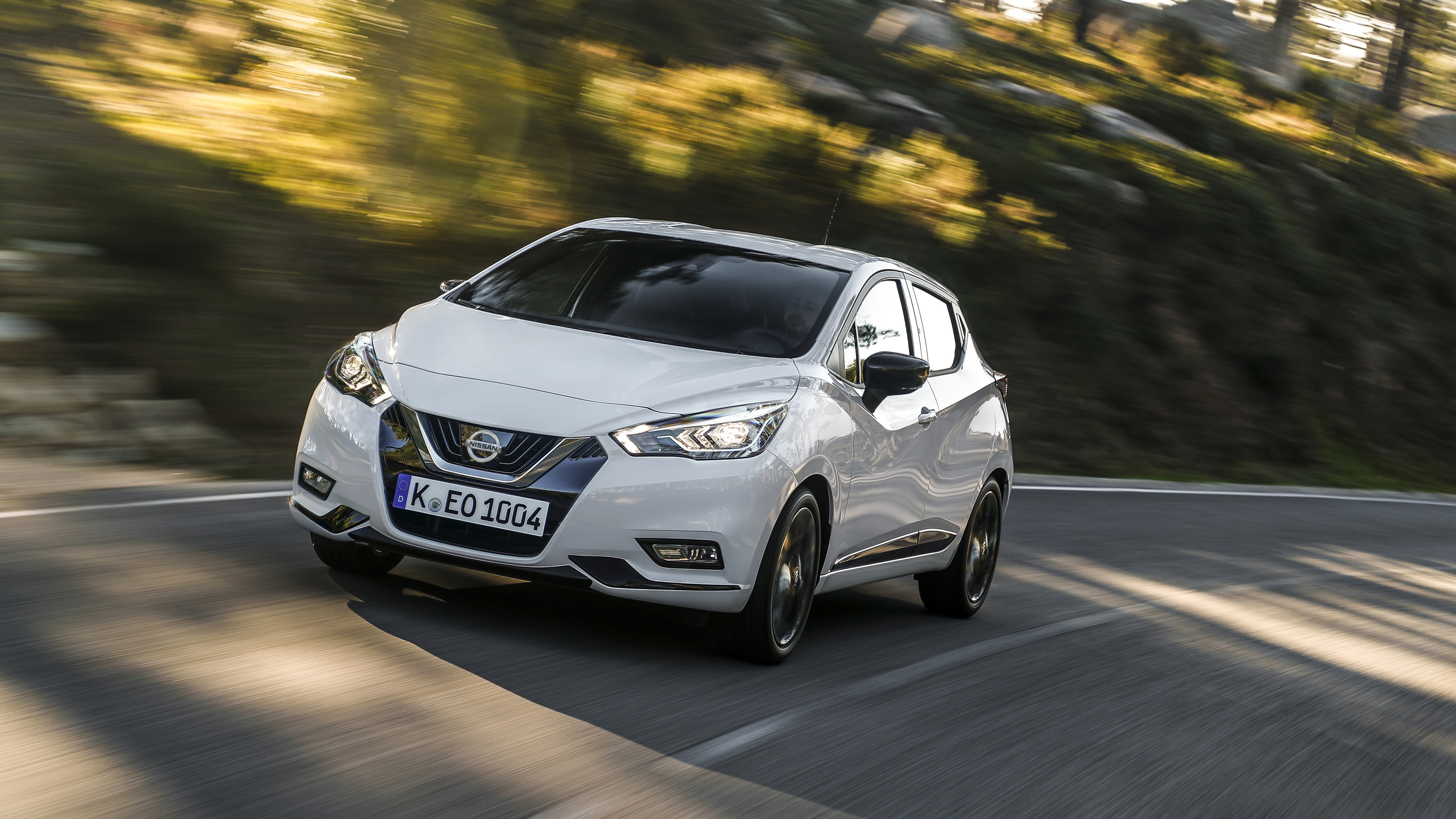

Welcome Americans! Good to see we’ve got your attention. Now let us begin by saying the Nissan Micra – this car you have no interest in whatsoever, which is small enough to fit in the cupholder of your truck – is not a ten-second car. Not even close. Sorry.
No, our claim doesn’t relate to the Micra’s quarter-mile time, but its 0-62mph time when fitted with a new 1.0-litre, three-cylinder engine. Said engine, which makes 117bhp (17 more horsepower than the next most powerful engine) is on sale now as part of the Micra’s mid-life facelift. So equipped, 0-62mph happens in 9.9 seconds. That’s an improvement of one whole second over the next-fastest engine.
You also get a ‘performance-oriented’ six-speed manual transmission, 10mm lower suspension with special tuning and sharper steering. Nissan calls it a “warm hatch” and we reckon that’s stretching things a bit. Tepid, maybe. Or room temperature. Either way, the Micra is a decent-handling little car anyway, so marginally more focussed suspension and a tad more power is most welcome.
Elsewhere for the facelift the 90bhp engine has been ditched in favour of a 100bhp one, there’s a new CVT auto box and some new trims.
Now, stop mucking around and give us a proper Micra Nismo, please.
Nissan Micra












Interior
What is it like on the inside?
Up front, there’s little to complain about in the Micra. The seats and driving position are fine, and the steering wheel is a comfortable one to hold with a logical collection of buttons on the two horizontal spokes. The dials are clearly scripted and the central screen is sharp and informative.
A big central screen takes care of phone mirroring (mid-spec) or built-in nav (top-spec). Nissan’s infotainment system is quick to respond and easy to navigate, but looks and feels outdated alongside competitors’ efforts. There’s also a fine-value Bose stereo option that puts little speakers in the driver’s head rest. Nissan’s proud of this tech (which it has exclusive use of for a time) and justifiably so. Youthful Micra buyers will love it and it sounds really rather good.
In the back, it’s on the cramped side for the class, compared to the likes of a Citroen C3 or Ford Fiesta, let alone the vast Seat Ibiza. Boot space is adequate, and rear visibility is a tad more pinched than we’d like. Nissan will argue that the fleet of surround-view cameras and sensors available are happy to combat that problem in car parks. Fine, but they don’t make those nippy lane-change merges on a dark rainy motorway any easier…
Spec the N-Sport and the main swathe of dash is covered in Alcantara, which goes a long way to lifting the perceived quality inside. As standard, the plastics are fine but nothing exemplary. We like the textured cubbyhole underneath the USB socket that’s ideal for storing all but the largest smartphones. There’s also small stowage to be discovered under the armrest and in the door bins.
All told, it’s not a remarkable cabin, but it’s well executed enough not to be actively frustrating.
Nissan Micra review: diesel version tested
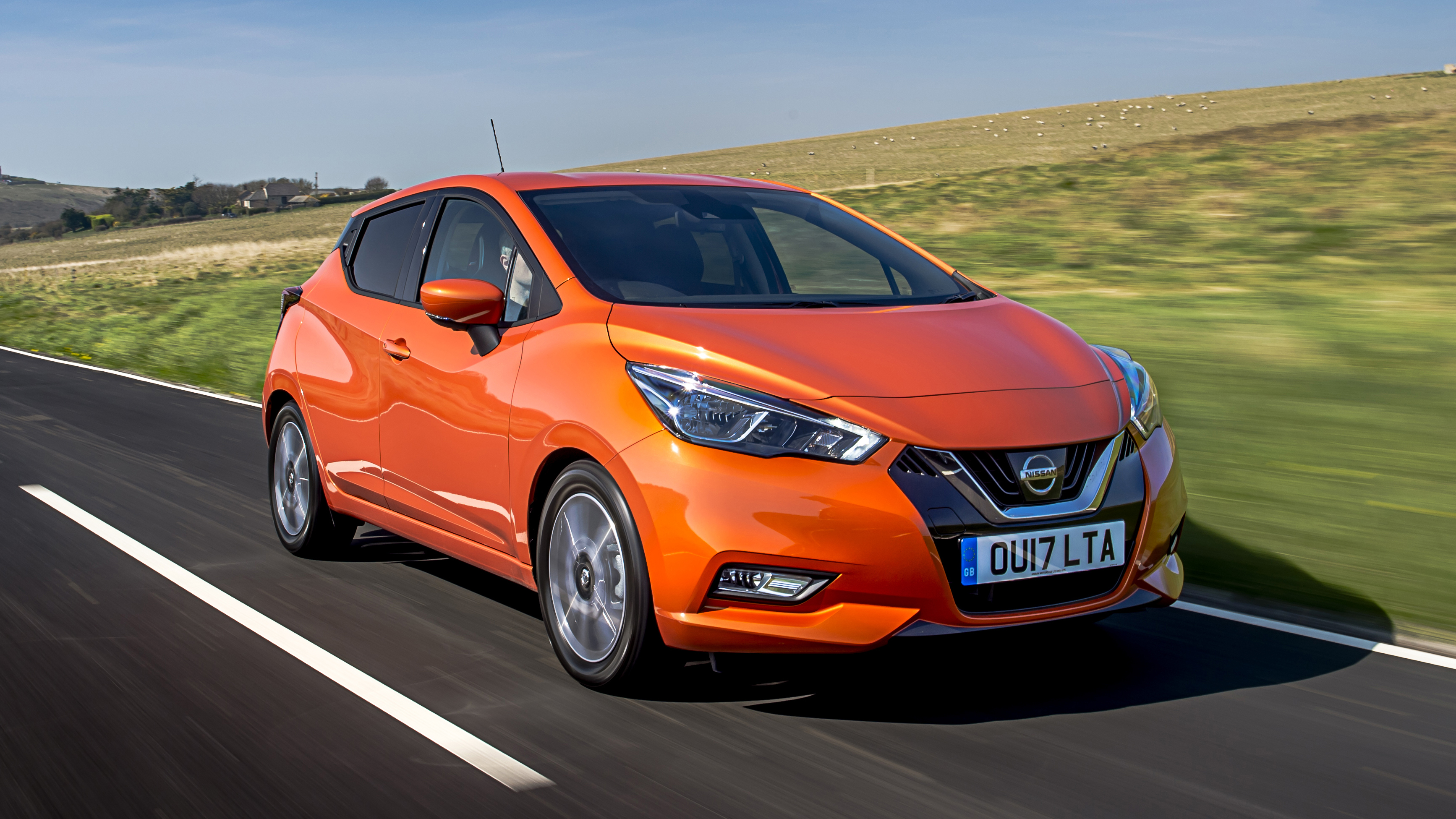
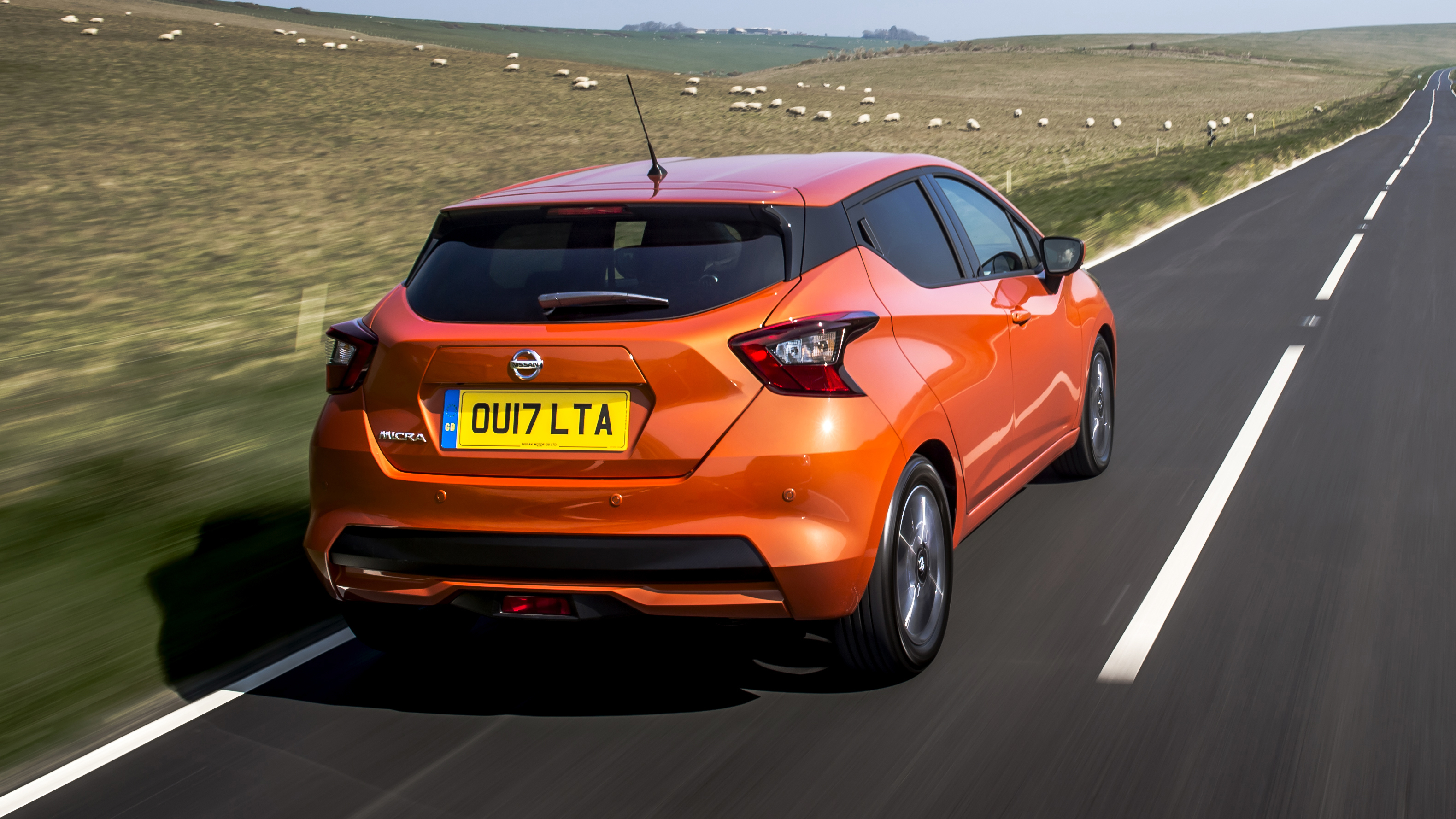
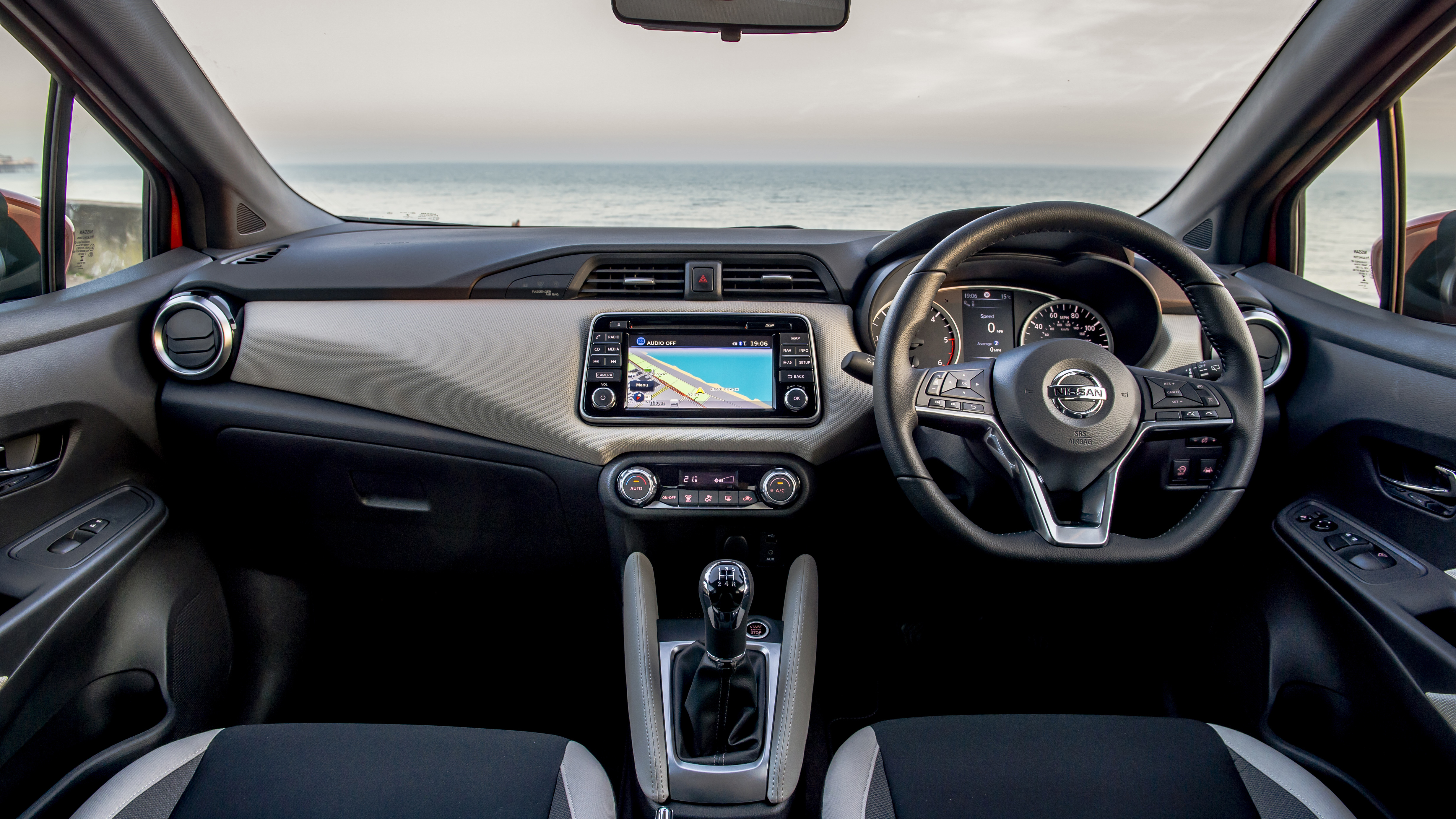


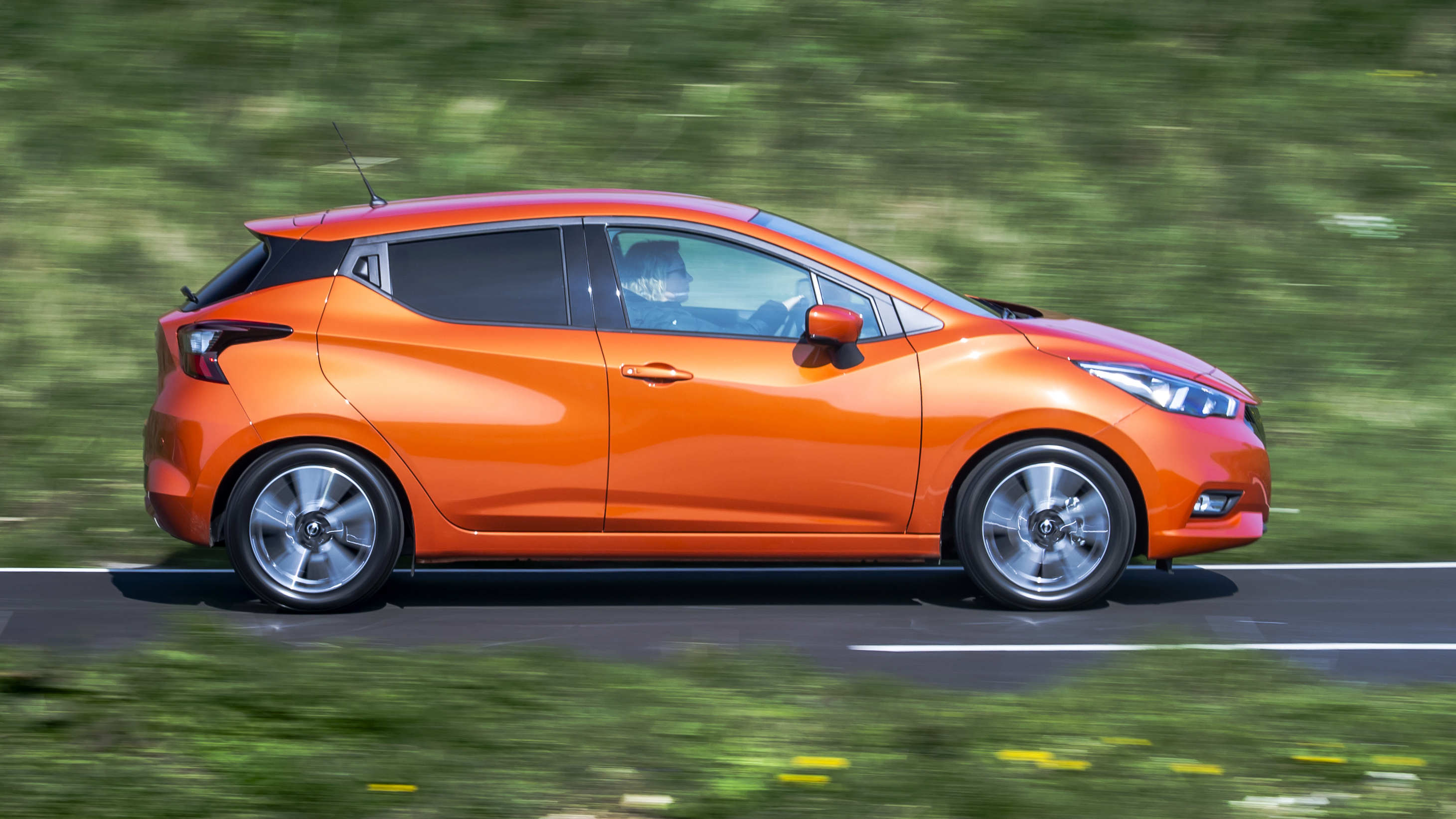
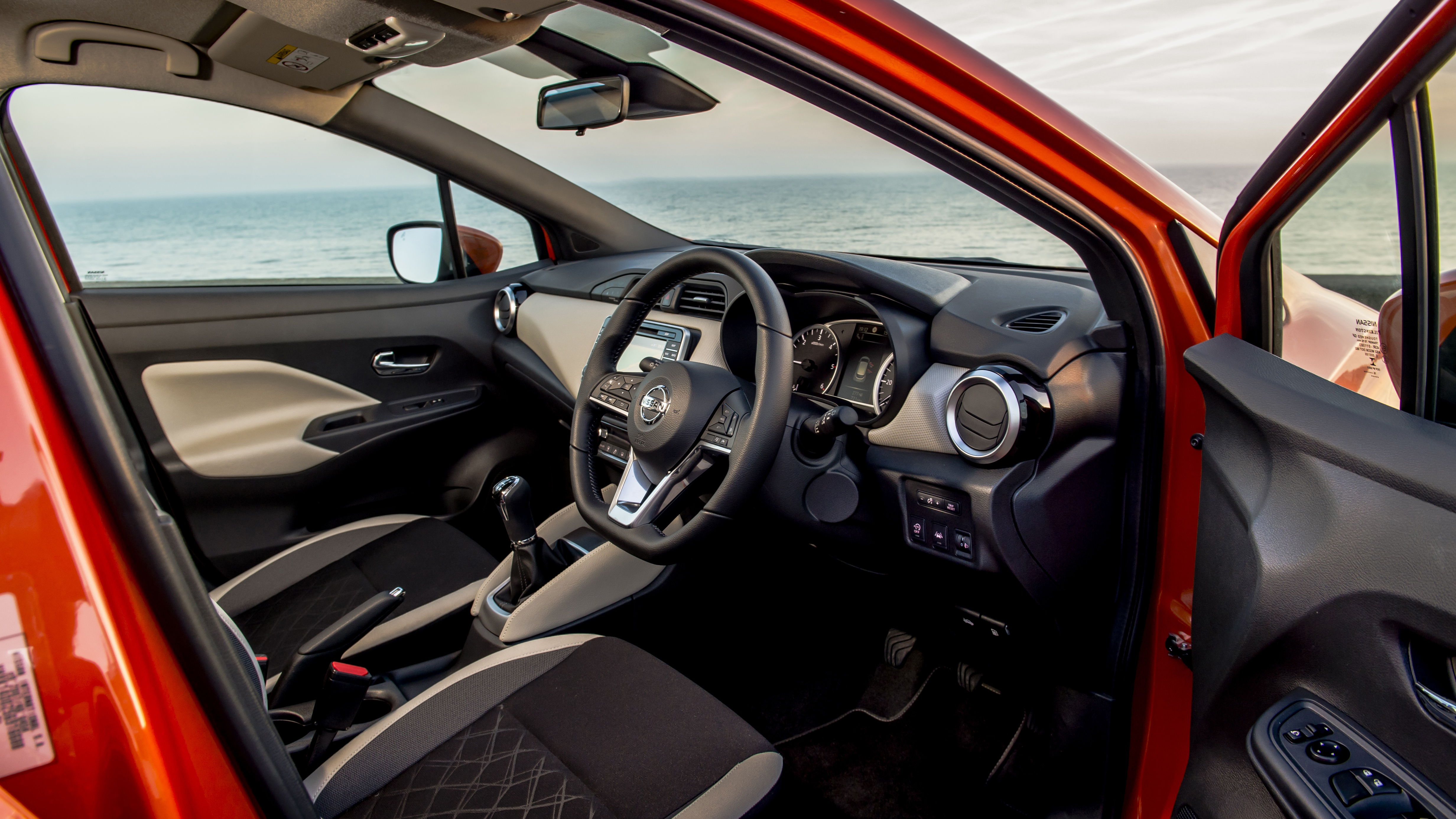

SPEC HIGHLIGHTS
Which Nissan Micra is this?
The 1.5-litre diesel, which, until Nissan decides to give their new hatchback an engine with more than 100bhp (quickly, please), is the fastest Micra you can buy.
It has the same 89bhp as the 0.9-litre turbo petrol most will quite rightly go for, but there’s more torque. 162lb ft versus just 103lb ft, so despite the extra 60kg, it’s 0.3secs quicker to 62mph (11.9secs). Feels it, too. The gearbox is a five-speed manual borrowed from Renault, like the engine. Nissan claims 88.3mpg and 85g/km of CO2.
The new Micra’s quite good, right?
Indeed. “Micra” has become a bit of a byword for “cheap tat” – mostly because some older ones were just that – but this one changes things. It may be based on a (very) heavily revised version of the ‘V’ platform as used by the outgoing Micra, but you’d never know. That was a ‘world car’ built to satisfy the needs and demands of not just Europe, but Asia, South America and so-on. This one’s specifically designed for Europe, so it’s 174mm longer, 78mm wider and 55mm lower.
More stylish and better equipped, too, with tech from the Qashqai. While the outgoing car competed with Sanderos and the like, this one aims for Fiestas, Polos and Clios. And the price has risen accordingly, from £7,995 to £13,795.
And how’s the diesel?
Refined and punchy enough (for its size), but our money would still go on the turbo petrol. You feel the extra weight over the nose (not as much here as elsewhere in the segment, admittedly), so while the diesel Micra still handles well, it’s not quite as light-footed as the petrol. Doesn’t ride quite as well, either.
The only real reason to go diesel is if you’re doing most of your driving on motorways, though we’d argue if that’s the case, you shouldn’t be buying a supermini anyway. Extra torque is welcome, but because the gearing’s still really long, having to downshift through one or two gears up hills or as you pull into the outside lane is as common here as it is in the petrol.
What about the rest of it?
Top Gear
Newsletter
Thank you for subscribing to our newsletter. Look out for your regular round-up of news, reviews and offers in your inbox.
Get all the latest news, reviews and exclusives, direct to your inbox.
